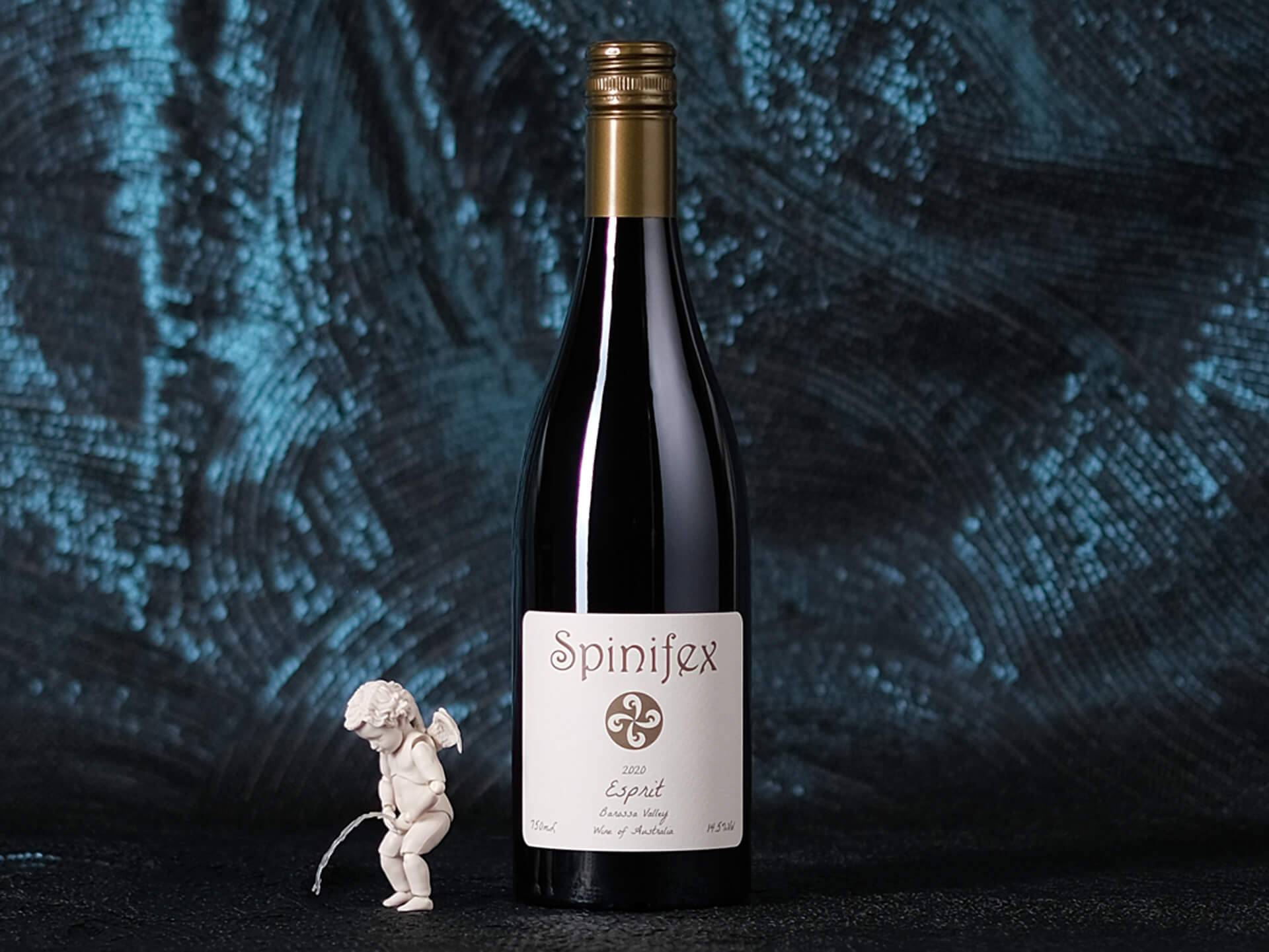Pete Schell is revered by his peers for many things, but his skill at blending across varieties and across a mosaic of micro-parcels of sites, blocks and ferments is the stuff of legend. Built from mataro, grenache and cinsault, this illustrates what makes blends so compelling – each component pooling into the gaps left by the others, leaving a seamless whole, laced with ripe red fruits, spice and floral notes, the palate supple, with fine grip and natural freshness.
Tasting note
On the nose, lifted ripe red berries, led by raspberry and dark red cherries, with mulberry notes chiming in, a dusting of peppery spice and blue florals accenting. There’s ample fruit and depth here, but in typical Spinifex fashion, it’s so well composed and balanced, ripe but not broad, savoury but not drying. Flavours unlock even more with air, revealing an even more sleek and succulent beast, fine but assertive tannins and vibrant natural acidity closing out a detailed and effortlessly balanced wine.
Themes of this wine
Mourvèdre
Mourvèdre – or Mataro if you’re from South Australia – is a grape that is typically blended, usually with grenache and shiraz. Bottled solo, it often makes dark-fruited wines with gruffly earthy/herbal notes and plenty of tannin, but it makes some of the world’s best rosés, too.
Grenache
The great grape of the Southern Rhône, grenache, has also found many homes around the world, from Spain, to Italy, to California, while Australia is home to the world’s oldest productive grenache vines, planted in 1948. Today, a renaissance is seeing the grape championed, with makers in McLaren Vale arguably turning out the most compelling examples.
Cinsault
Cinsault has been grown in Australia since pioneering days, but it has typically been swallowed by blends. However, its ability to shrug off hot and dry conditions and still make elegant wines with plenty of acidity is seeing its star rise in warmer zones like the Barossa Valley. Fragrant and quite pretty, cinsault can have very lifted aromas of red berry fruits, like raspberry, strawberry and cherry, while some blue floral notes, like violet also typically feature. It rarely achieves much more than midweight, with gentle tannins and decent acidity.
Blending
Most wines are a blend of some sort. It may be a blend of the same variety from the same vineyard, but with different blocks, clones, aspects, picking dates, ferments and then barrels (if barrel aged), each batch is a little different. Sometimes everything goes back in, and sometimes a winemaker will select the parcels to make a particular style of finished wine or just the best wine they can. This principle is used across varieties, too, with many traditional regions in the Old World blending across varieties to make a complete whole, with some grapes adding fragrance or fruit depth, some tannin, some acid… the art of the blender is to get the balance right. Increasingly, winemakers are breaking the established rules of these classic blends, making surprisingly new expressions from varieties that have rarely shared a bottle prior.
Barossa
The Barossa is arguably Australia’s most revered wine region. It dwarfs many other fine wine regions for scale, while firmly maintaining a quality profile, with its distinctive style and character recognised worldwide. It is dripping in history, has far and away the largest resource of old and ancient vines in the country, and fifth- and sixth-generation growers and makers proliferate. It is fair to call it the cornerstone of Australian wine. It is the home of powerful red wines, established names making established styles, but there are also makers finding new meaning in the territory.



